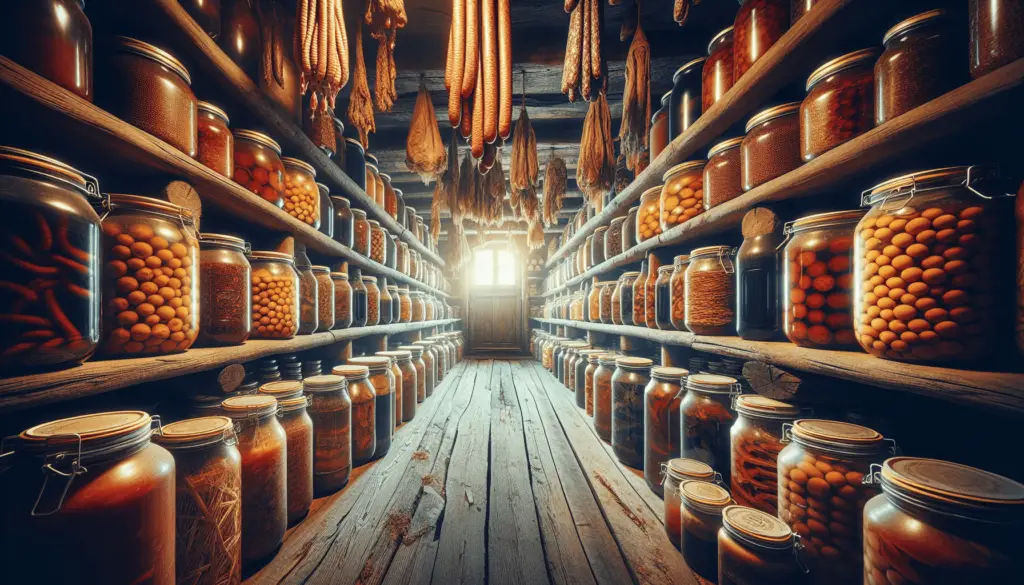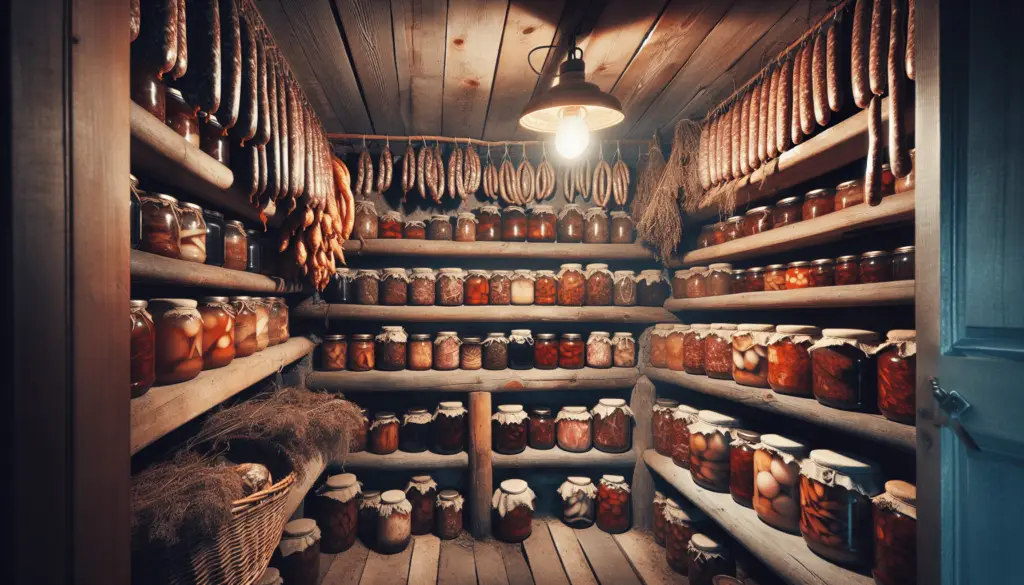You’re probably wondering how you can prepare and store meat in a sustainable way in case of an emergency. This guide will help you understand the methods and techniques for processing and preserving meat efficiently. Let’s get started!

Understanding Sustainable Meat Processing
When it comes to sustainable meat processing, it’s essential to know how to handle and prepare the meat properly. Ensuring that the meat is processed correctly will not only help you extend its shelf life but also maintain its quality. By understanding the basics of sustainable meat processing, you can make the most out of your meat supply in any situation.
Proper Handling of Meat
One of the most critical aspects of sustainable meat processing is the proper handling of the meat. Make sure to keep the meat clean and at the right temperature to avoid contamination. Additionally, ensure that you use clean utensils and surfaces when processing the meat to prevent any foodborne illnesses.
Different Processing Methods
There are various methods for processing meat, including curing, smoking, and canning. Each method has its advantages and disadvantages, so it’s essential to choose the right one based on your preferences and needs. Experimenting with different processing techniques can help you find the best way to preserve meat for the long term.
Sustainable Meat Preservation Techniques
Preserving meat is crucial for preppers to ensure that they have a stable food supply during emergencies. Learning about different preservation techniques can help you extend the shelf life of your meat and reduce waste. Let’s explore some sustainable meat preservation methods that you can start using today.
Curing and Smoking
Curing and smoking are traditional methods of meat preservation that have been used for centuries. By curing meat with salt and then smoking it, you can create flavorful and long-lasting preserved meat products. These techniques not only enhance the taste of the meat but also help inhibit bacterial growth, extending the shelf life of the meat.
Canning
Canning is another excellent method for preserving meat in a sustainable way. By canning meat in jars or cans, you can create convenient and shelf-stable food products that can last for an extended period. Canned meat is easy to store and transport, making it an ideal option for preppers looking to build a long-term food supply.
Freezing
Freezing is a simple yet effective method of meat preservation. By freezing meat at the right temperature, you can extend its shelf life significantly. When freezing meat, make sure to wrap it properly to prevent freezer burn and maintain its quality. Freezing is a convenient way to preserve bulk meat purchases and leftovers.
Sustainable Meat Storage Tips
Proper storage is crucial for maintaining the quality of preserved meat products. By following some simple storage tips, you can ensure that your meat is safe to eat and retains its flavor. Let’s explore some sustainable meat storage practices that you can implement in your prepping routine.
Vacuum Sealing
Vacuum sealing is an excellent way to store preserved meat products for an extended period. By removing the air from the packaging, you can prevent oxidation and freezer burn, ensuring that the meat stays fresh. Vacuum-sealed meat is also more compact and easier to organize in your storage space.
Root Cellaring
Root cellaring is a traditional method of storing fruits, vegetables, and preserved meat in a cool, dark space. By utilizing a root cellar or a similar storage area, you can keep your meat products at an ideal temperature and humidity level. Root cellaring is a sustainable and energy-efficient way to store food without relying on electricity.
Rotation System
Implementing a rotation system for your preserved meat supply can help you manage your inventory effectively. By organizing your meat products based on their expiration dates, you can use the oldest items first and ensure that nothing goes to waste. Regularly check your inventory and rotate the products to maintain a fresh and diverse food supply.
Sustainable Meat Processing Tools and Equipment
Having the right tools and equipment is essential for processing and preserving meat efficiently. Investing in high-quality tools can make the task easier and more enjoyable. Let’s explore some essential tools and equipment that preppers should consider adding to their collection.
Meat Grinder
A meat grinder is a versatile tool that allows you to grind various cuts of meat to your desired consistency. Grinding your meat at home gives you control over the quality and fat content of the meat, ensuring that you get the best results. Look for a durable and easy-to-clean meat grinder that can handle different types of meat.
Smoker
A smoker is an essential tool for preppers who want to preserve meat through smoking. Whether you prefer a traditional wood smoker or an electric smoker, investing in a high-quality smoker can help you achieve delicious smoked meat products. Choose a smoker that meets your needs and fits your budget to enjoy flavorful preserved meats.
Pressure Canner
A pressure canner is a must-have tool for canning meat safely and effectively. By using a pressure canner, you can create airtight seals that prevent bacterial contamination and ensure the long-term storage of your canned meat products. When shopping for a pressure canner, look for a model that is reliable, easy to use, and built to last.

Sustainable Meat Processing Resources
Finding reliable resources and information on sustainable meat processing can help you improve your skills and knowledge in this area. Learning from experts and experienced preppers can give you valuable insights and tips for processing and preserving meat effectively. Let’s explore some useful resources that you can use to enhance your prepping journey.
Books and Guides
There are many books and guides available that cover various aspects of sustainable meat processing and preservation. Look for books written by reputable authors who have experience in prepping and food preservation. These resources can provide you with detailed instructions, recipes, and troubleshooting tips for processing meat at home.
Online Communities
Joining online communities and forums for preppers and food preservation enthusiasts can connect you with like-minded individuals who share your interests. Participating in discussions and asking questions in these communities can help you learn from others’ experiences and get advice on sustainable meat processing techniques. Online platforms like blogs and social media can also be valuable sources of information and inspiration.
Workshops and Classes
Attending workshops and classes on sustainable meat processing and preservation can give you hands-on experience and practical skills that you can apply in your prepping routine. Look for local classes or online courses that cover topics such as butchering, curing, and canning meat. Learning from experienced instructors can help you master new techniques and improve your food preservation skills.
Conclusion
In conclusion, sustainable meat processing and preservation are essential skills for preppers who want to build a stable food supply for emergencies. By understanding the basics of meat processing, experimenting with different preservation methods, and investing in the right tools and equipment, you can ensure that you have a reliable source of meat during challenging times. Use the tips and resources provided in this guide to enhance your prepping journey and enjoy delicious and nutritious preserved meat products for years to come. Happy prepping!
